“You might think that this is a bit much but the first time I lay down and looked at a sky full of stars, I had tears in my eyes,” says Nikhil Balasubramaniam.
Nikhil is not new to the night sky. He has however, lived all his life in Chennai, and has only looked at the blank, dark canvas of the world, through the scruffy blanket of light pollution. It took him a solo trip to the thick forests of the Sathyamangalam Tiger Reserve in Tamil Nadu, to finally be able to look up and experience the vastness of the galaxy.
“I went for my first stargazing trip in 2023 and it was overwhelming. It’s when I realized that I was but a mere speck. Nothing else mattered at that exact moment,” he says.
The 24-year-old video editor is not the first of us humans to philosophize the stars. Bhavanandhi Babulal, founder of Starvoirs, who conducted this expedition to Sathyamangalam, says that such reactions are common when he takes tour groups to see the night sky. It has prompted him to set up telescopes in various parts of India on this chase of inky blue skies. He would like more people to experience this feeling of nothing and yet, everything.
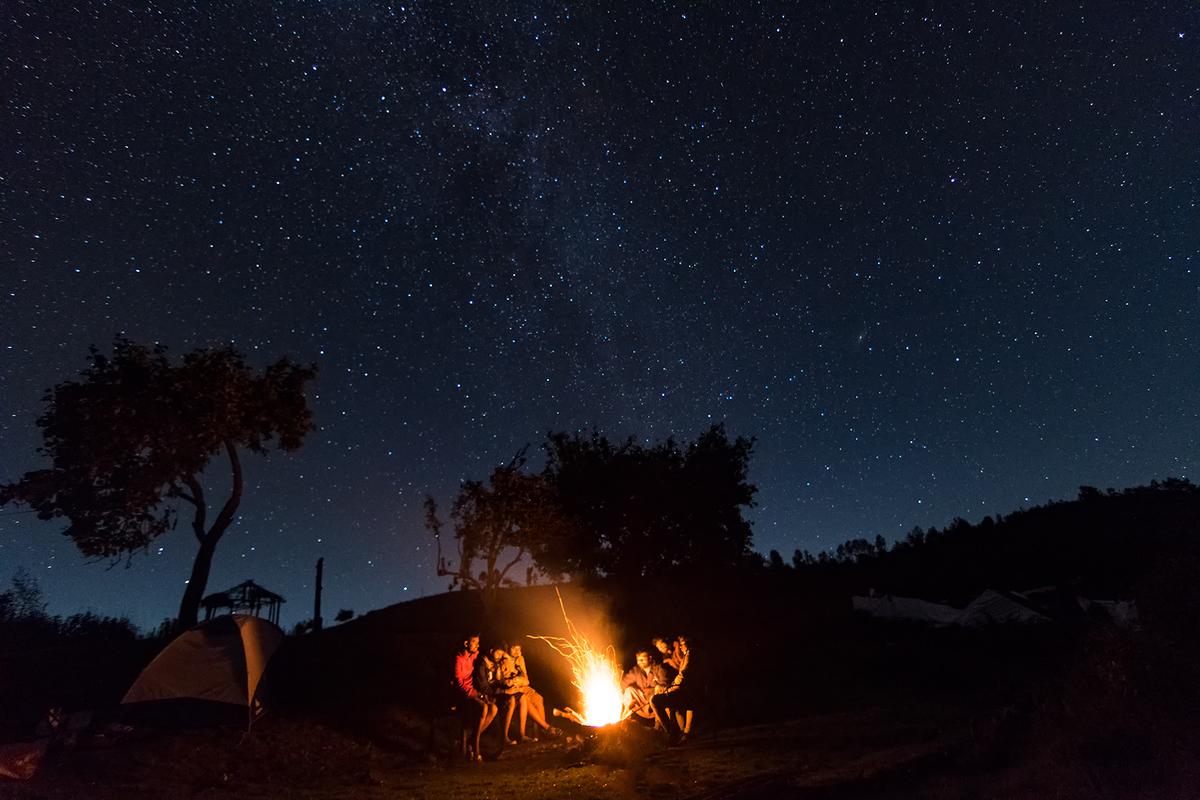
“People who grieve and are heartbroken often tend to get emotional on these trips but the skies don’t spare you and me. Once the star bug bites, it doesn’t let go. Take Nikhil for example. He has been on three trips with us in the last year,” says the founder of this Chennai-based startup which organizes stargazing trips across the world including to the Maasai Mara in Kenya.

Astro-tourism is not new to India. Several representatives from this space have attributed the boom in this segment to COVID-19, when human and vehicular movement was restricted and as a result the skies cleared up. “Many people bought telescopes, watched YouTube videos and began stargazing,” says Kailas Belekar, founder and director of Aeronautics & Space Exploration, a Nagpur-based company.
Ladakh was among the first sites in the country to attract stargazers. On the Bortle Scale, a nine-level numerical scale that measures the night sky brightness of a particular location, Ladakh’s skies rank at 1. Kailas says that elevation and fewer layers of clouds, help present clear night skies to spot other galaxies far, far. away. The Hanle observatory attracts several thousand visitors a day. As recently as May 2024, the Aurora borealis (commonly known as the Northern Lights) were visible from here.
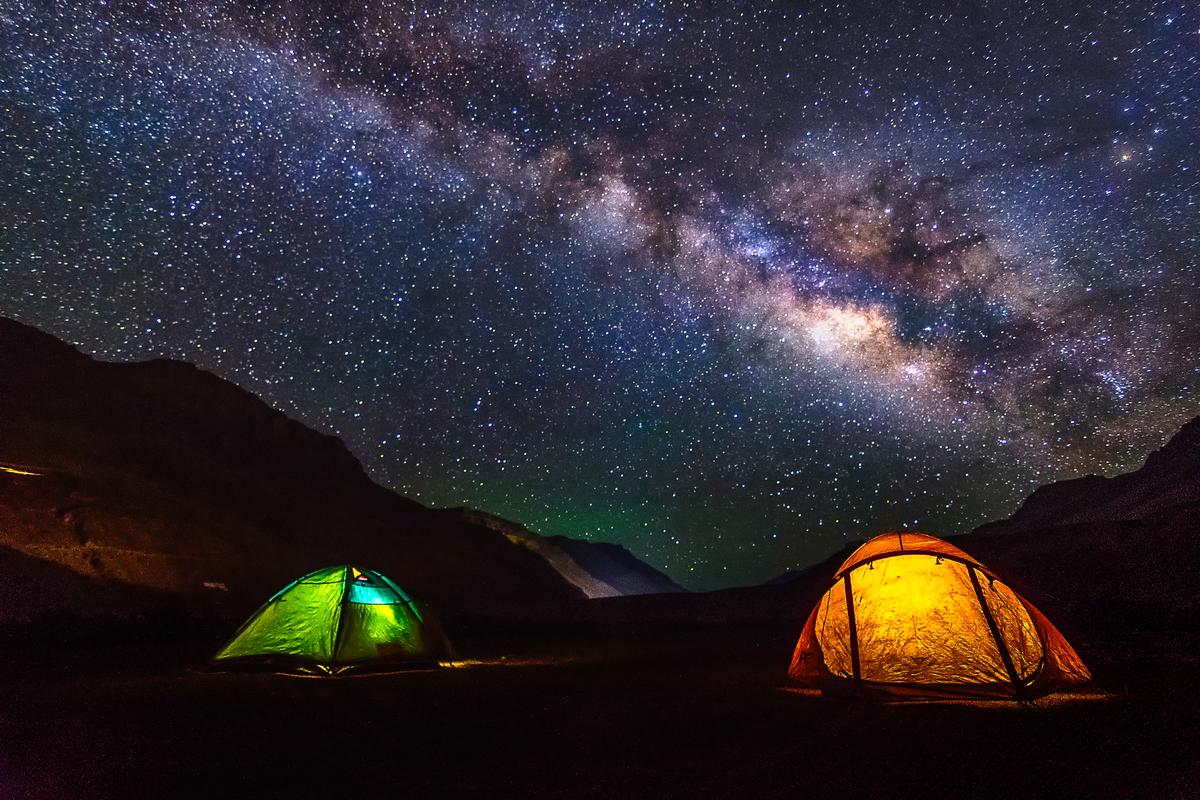
However, acclimatising to the altitude, sizeable expenditure, and the minimum requirement of a week-long travel plan to Ladakh, has made travel companies explore other options close to cities where skies are dark and the stars twinkle just as brightly. Even though it may not be at the level of Bortle 1, one could easily be treated to sights of the Milky Way flowing in streaks of white and purple, with just the naked eye, the organizations assure.

Over the last year, destinations like Pench, Ranthambore, Kodaikanal, Kullu and Manali, the Andamans, Rann of Kutch and states like Meghalaya, Mizoram and Nagaland, have emerged as favorites for those looking to travel on short trips. These trips tend to be economical (upwards of ₹4,000), enabling several youngsters and enthusiastic grandparents (some of these trips have accommodated 80-year-olds) to take part. The aspects of camping, staying away from most civilization, learning more about the infinite galaxies, and life-changing views, draws people from various walks of life to join these expeditions.
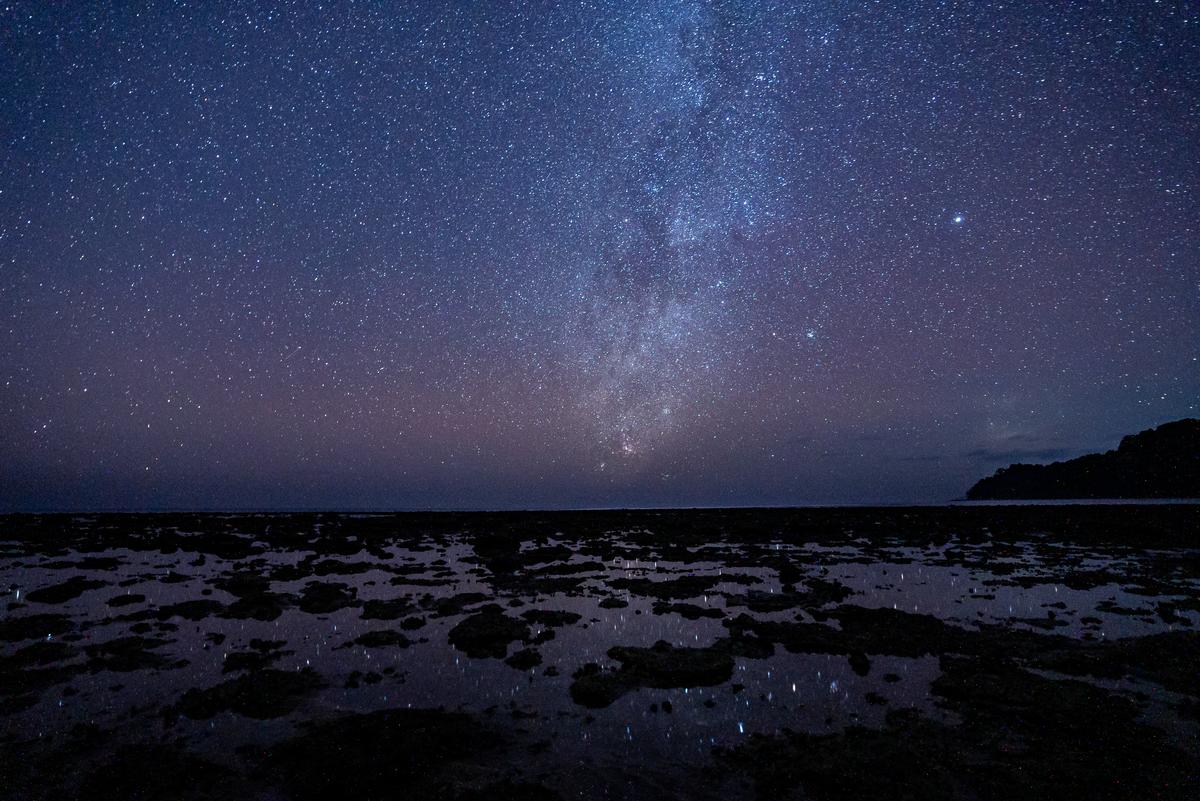
in the thick of it
Abhishek Pawse and his brother Ajinkya, residents of Nagpur, have been visiting the buffer zone of Maharashtra’s Pench Tiger Reserve, to gaze at the sky. “The Dhruva Sky Watchers Association in Nagpur, had set up a small telescope at Pench. We used to go there often. However, in 2020, during the pandemic, we began noticing that the sky was beginning to look a little different. The neighboring villages had begun using white solar lights. Without blinkers, it led to light pollution. We approached the Forest Department and the villagers, who agreed to cover the lights from the side. It took a lot of groundwork. Around that time, we applied to the International Dark Sky Association to ensure that the area could be certified and hence, protected,” says Abhishek.
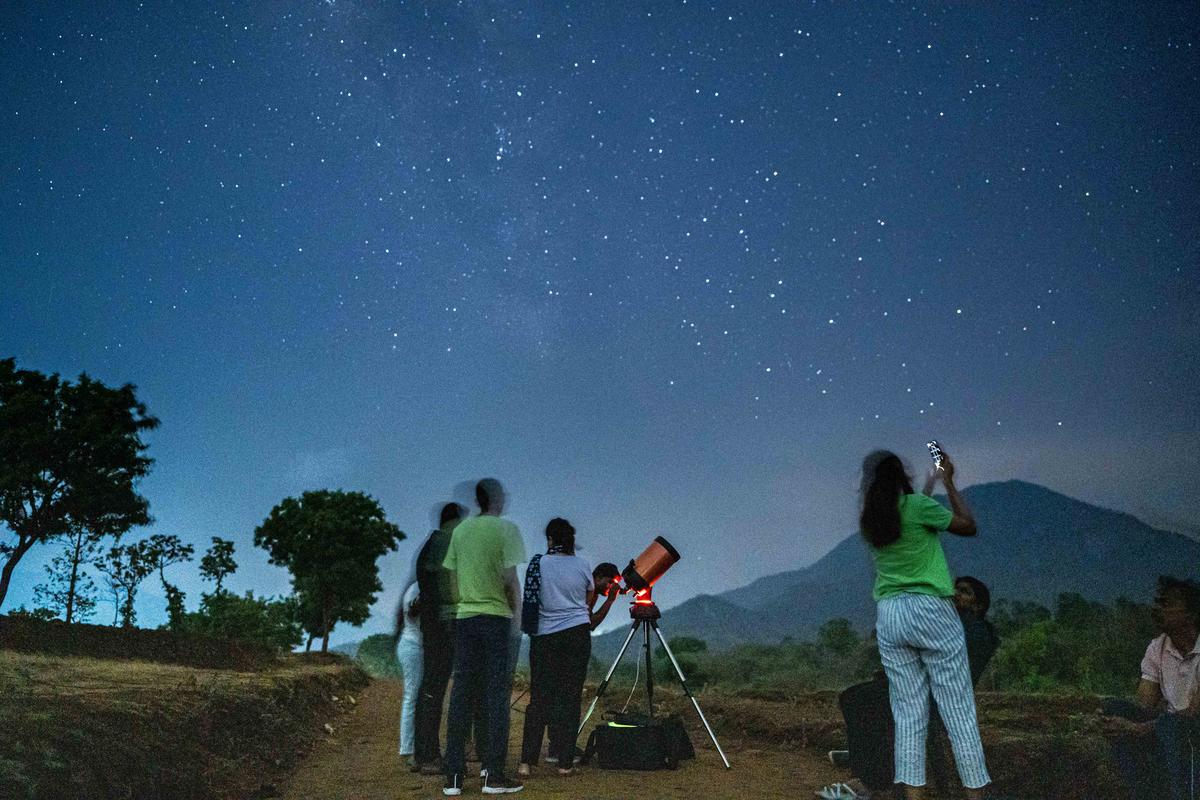
Since Pench was declared a Dark Sky Park in January 2024, a minimum of 30 people and a maximum of 120, visit this observatory per day in remote Maharashtra. The tower with three floors, has an observation deck and a rolling roof observatory with multiple telescopes. “One can easily observe several galaxies millions of lightyears away from us. Star clusters can be seen from here too,” Abhishek says. He adds that the observatory is located near a beautiful pond within the tiger reserve. Most people make a day of the stargazing event by booking themselves on a safari, as the company has partnered with the Forest Department to run the operation from here.

Atish Aman of Cosmic Trails, says that Pench has emerged as one of the success stories of the year. He hopes that the sustainable means through which the department and the individuals involved have created this observatory, is replicated in other parts of India too. He says that employing locals will help foster a commitment to the night sky and adds that Uttarakhand and Rajasthan continue to show promise too. Trips to Ranthambore and Sariska Tiger Reserve draw steady groups, usually consisting of about 20 individuals.
Bhavanandhi insists that to keep individuals concerned about the larger conversation on the night sky, companies must necessarily teach their groups to stargaze on their own. “People are always excited to look at Saturn’s rings, the moon’s craters and Jupiter’s eruptive gaseous atmosphere,” he says. One must hence begin watching the sky with the naked eye; look through the telescope; and then begin getting curious about several celestial objects in the sky.
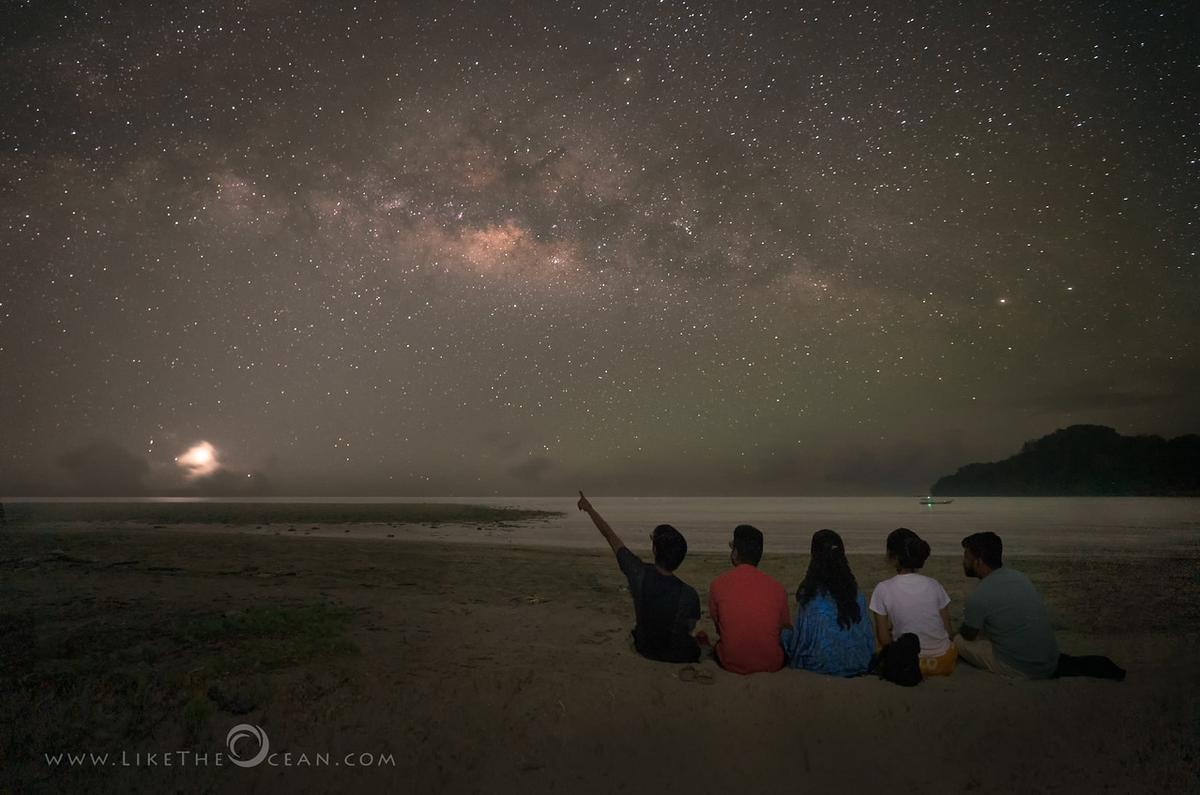
Conversations with friends by the beach under the stars – are indeed priceless. Photo Credit: Sathya
Stargazing tends to happen all night and often until 4am. Participants need to be entertained during the day, he says, adding that they tend to hike to waterfalls, explore local cuisine and have immersive meetings with the residents of the small towns and villages they go to.
At Mizoram, the villages they stayed at were mostly empty and without electricity but the landscape and the hikes made up for it, everyday, he says. Both Bhavanandhi and Kailas say that basic fitness might be essential to complete safaris, hikes and especially stargaze all night. Kailas says to avoid planning stargazing trips during the monsoon as clouds will interfere. “In most parts of India, prepare to stargaze during extremely hot summers or extremely cool winters,” he says.
“On my last trip, we traveled all the way from one end of the Andaman islands to the other through our other expedition. It was great as it was often accompanied by song, dance and conversations about books. Everyone was aligned with the larger goal of looking at remote stars and understanding the galaxy. Each trip has ended up becoming a learning experience. It is why I am headed back to Sathyamangalam again, later this month. This is where it all started for me,” says Nikhil.
Bhavanandhi adds that safety has been an important point of discussion and adds that to ensure that women feel safe at night in these remote spaces, they recce well in advance and ensure that there are avenues to complain in case of threat. He adds that there have been very few instances of such violations and says that on the contrary, many people who have met through his trips have gone on to get married. “Falling in love under a meteor shower. What could be more romantic?” he asks.

Published – September 07, 2024 10:52 am IST

